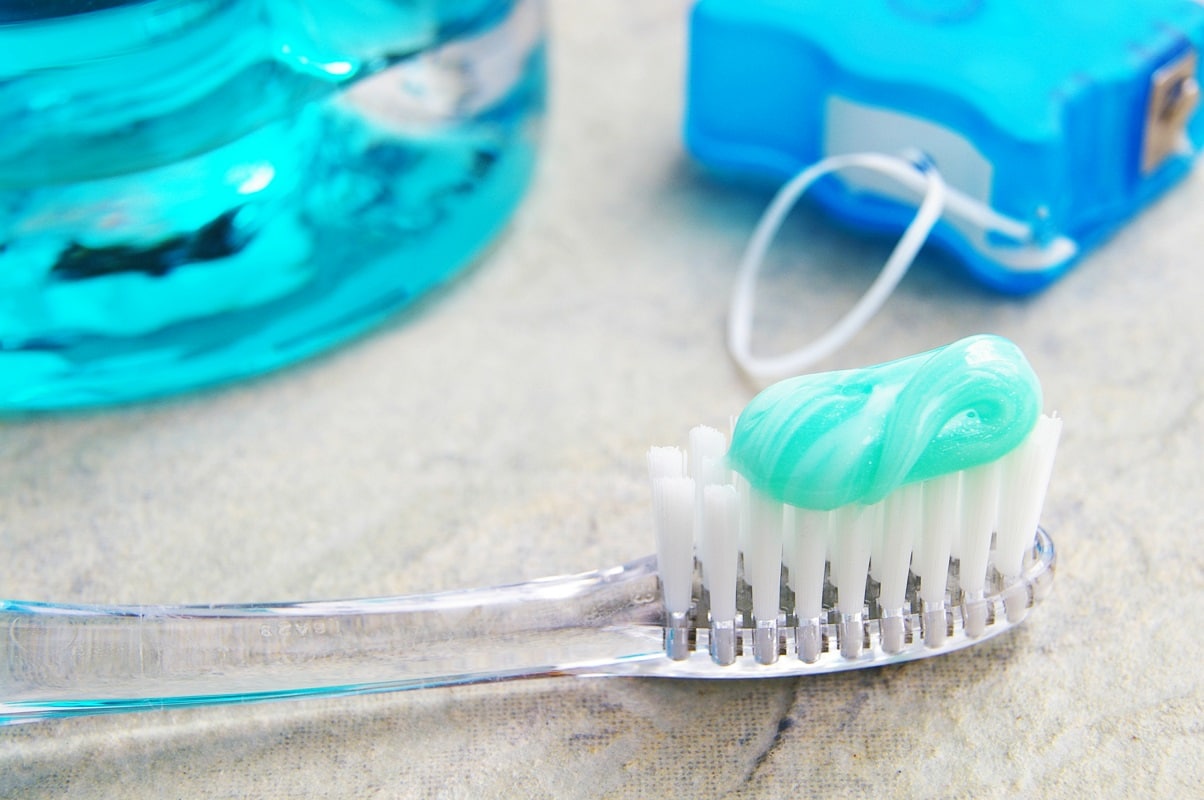If there’s one thing you’ve heard from your dentist time and time again, it’s the importance of brushing and flossing your teeth every day. These dental hygiene habits help to ensure that harmful oral bacteria and leftover food particles are removed from your oral cavity before they have a chance to cause damage and other health problems. You have likely been instructed, more than once, on how exactly to brush and floss your teeth in order to achieve the most beneficial results. But when it’s time to actually get started, you might find yourself wondering which comes first–the brushing or the flossing.
Brushing vs. Flossing
Brushing and flossing both work to remove harmful oral bacteria and leftover food particles, but in different ways. Brushing all reachable tooth surfaces can help you to eliminate any plaque buildup and leftover food particles in these places, while flossing between the teeth can help you to eliminate any plaque buildup and leftover food particles that are lodged in places that toothbrush bristles are too large to penetrate. Neither one of these actions is sufficient, in and of itself, to protect your oral health, whereas both of these actions together are highly effective at protecting against tooth decay, gum disease and other oral health issues.
There is actually no scientific evidence to indicate whether you should brush before you floss or floss before you brush. Instead, individuals tend to choose to do one before the other because in their mind it makes sense and it’s what they are most comfortable with. For example, brushing first can allow you to remove most of the plaque and leftover food and then flossing just finishes the job. On the other hand, flossing first allows you to eliminate the plaque and leftover food in between your teeth, and then you can brush it all away.
The bottom line is that it’s less important for you to brush before you floss or floss before you brush in any specific order, as long as you properly do both each and every day. If you have a specific preference for doing one before the other and this helps you to stick to your daily dental hygiene regimen, you should keep it up. For example, if you find that flossing before you brush helps you to remember to floss every day, while flossing after you brush allows you to set it aside occasionally as “less important”, then obviously you should stick to flossing first.
Brushing and Flossing Tips
In order to get the most out of brushing and flossing your teeth, consider the following tips:
- Brush your teeth at least twice every day, and floss them at least once every day.
- Scrub your tongue with your toothbrush at least once a day in order to get rid of any harmful bacteria that may be sitting there. Harmful bacteria that sits at the back of your tongue and throat can contribute to bad breath, halitosis and other issues.
- Replace your toothbrush at least once every three months. If you notice the bristles are looking worn or beginning to fall out, replace your toothbrush sooner.
- Use a non-alcoholic, bacteria-fighting mouthwash at least once every day in order to get rid of any harmful bacteria that may remain on your gums or in your mouth following brushing and flossing.
- Consider using an electric toothbrush with soft bristles, as these can remove up to six times the plaque compared to manual toothbrushes. (Avoid the high power settings as these may be abrasive to your protective tooth enamel.)
- Check with your dentist if you are considering using whitening toothpaste or strips, as these can also be abrasive or lead to tooth sensitivity issues.
- Use waxed floss so that it moves more easily between your teeth, and move down and around each tooth to remove all plaque and leftover food.
- Take the time to brush every single surface of your teeth, including the back of your top molars (partially closing your mouth around your toothbrush can help you to reach these difficult areas).
For more information about brushing and flossing, contact Dr. Saferin and Avenue Dental Arts today!


